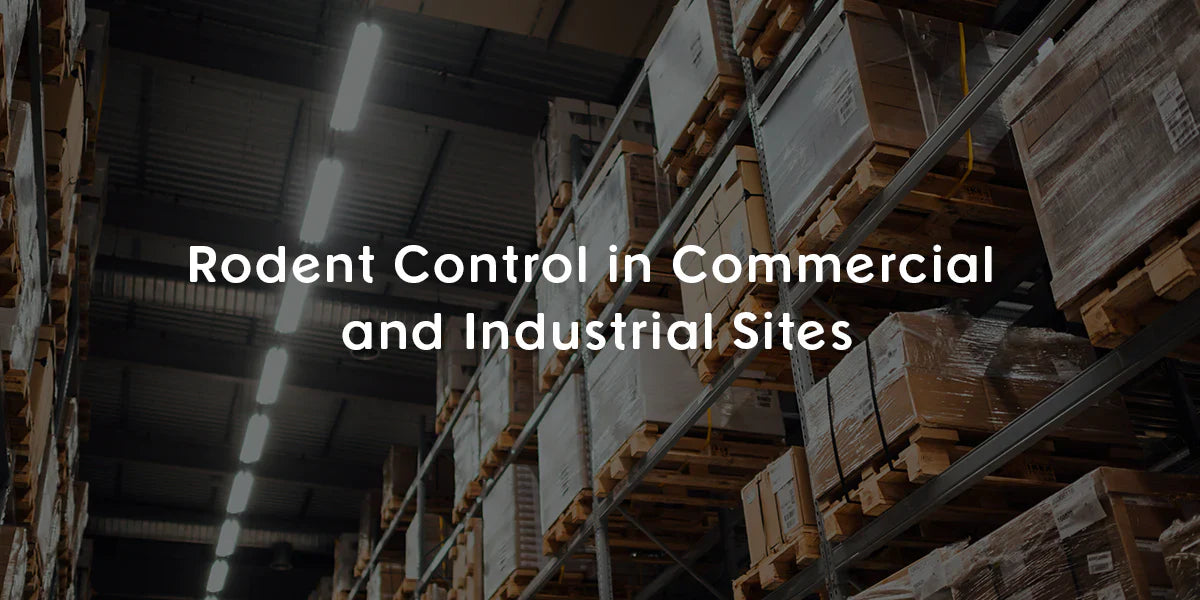Rodent Control in Commercial and Industrial Sites: Best Practices for a Pest-Free Environment

Rodents pose a significant threat to commercial and industrial sites, including warehouses, workshops, and offices.
Beyond health concerns, their presence can lead to serious property damage, contaminate stock, and even tarnish your business's reputation.
Effective rodent control is crucial to maintaining a safe, healthy, and productive workplace. This guide explores comprehensive strategies for rodent management, emphasising prevention, detection, and eradication within commercial settings.
Understanding the Risk
Rodents, primarily rats and mice, are attracted to sites where food, water, and shelter are readily available. In commercial and industrial environments, these conditions are often met inadvertently through stored goods, waste materials, and structural vulnerabilities.
The risks associated with rodent infestations include:
- Health Hazards: Rodents are carriers of diseases that pose significant health risks to employees and visitors.
- Property Damage: Their gnawing can damage buildings, electrical wiring, and machinery, leading to costly repairs and potential fire hazards.
- Product Contamination: Rodents can contaminate food products and other goods with their droppings, urine, and fur, leading to economic losses and legal liabilities.
Strategies for Rodent Control
Effective rodent control requires a multi-faceted approach, combining preventive measures with active eradication efforts.
- Prevention
- Sanitation: Maintain high standards of cleanliness. Dispose of waste regularly in sealed containers, and keep food storage areas clean and organized to reduce attractants.
- Proofing and Sealing: Conduct regular inspections of the building's exterior and interior, sealing any gaps, cracks, or holes that could serve as entry points for rodents. Pay special attention to doors, windows, and utility entry points.
- Landscape Management: Keep vegetation trimmed away from buildings. Reduce clutter and debris where rodents might nest or hide near your facility.
- Detection
- Regular Inspections: Implement routine inspections to identify signs of rodent activity, including droppings, gnaw marks, and nesting materials. Early detection is key to preventing a full-blown infestation.
- Monitoring Devices: To gauge rodent activity, use traps and monitoring stations strategically placed around your premises. These can help identify problem areas and the extent of an infestation.
- Eradication
- Bait Stations and Traps: Employ professional-grade bait stations and traps to safely and effectively reduce rodent populations. Bait stations can offer a controlled method of delivering rodenticides, while traps can be used to remove individuals or monitor activity levels.
- Employee Education
- Awareness Training: Educate your staff about the importance of sanitation, waste management, and the early signs of rodent activity. An informed team can act as the first line of defence against infestations.
- Legal and Regulatory Compliance
- Compliance: Ensure that your rodent control practices comply with local health and safety regulations, as well as industry-specific guidelines. Proper documentation of pest control measures can be crucial in meeting regulatory requirements.
Rodent control in commercial and industrial sites demands a proactive and integrated approach.
By combining preventive measures, early detection, effective eradication strategies, and employee participation, businesses can protect their premises from the risks associated with rodent infestations.
Remember, the goal is not just to address current issues but to establish a long-term management plan that safeguards your business's health, safety, and reputation well into the future.






